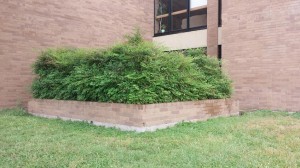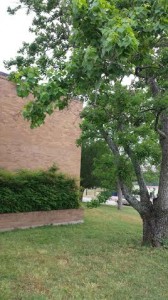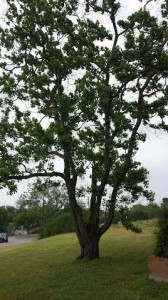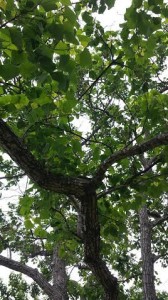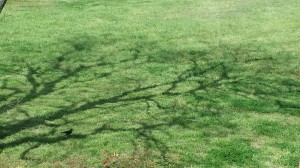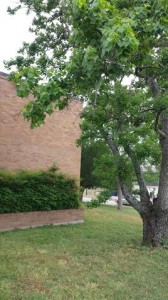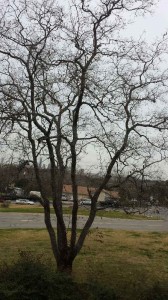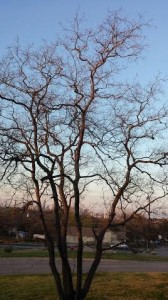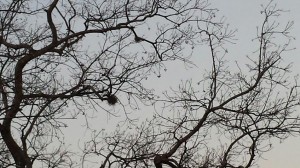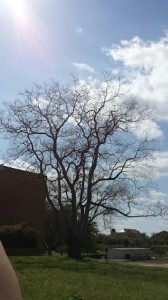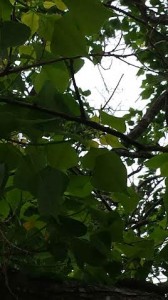For my final blog entry, I will be reporting on the final stages of my spot. The small area at the far end of East Hall is the place that I have been watching over all semester long. An L-shaped flowerbed, a large withered tree, and the small space of land surrounding this spot have been my main focal points through the duration of this semester. Observing the process of their growth has been very interesting as I was able to partake in the development of their unfolding beauty as they progressed during the winter and on into spring. This growth will be seen first in the changes that have occurred in the months of April and May, and then through pictures of their changes throughout the semester
As Aldo Leopold states, “it is time to listen to the final proof of spring” (Leopold 34). Weather patterns and their effects on the natural environment around here serve as proof that spring has finally come and decided to remain for a while. From the beginning of April, Austin, Texas has been slowly overcome by warmer weather. Temperatures all through the month of April, and well into May, have been ranging from the low 50’s to the high 80’s on a daily basis. Early mornings and late evenings are now the coldest times of day, whereas the rest of the day brings little breeze, the rise of humidity levels, and heated afternoons. The increase in temperature has done wonders for the natural flora and fauna surrounding my university’s campus – my spot included.
I could not help but think that everything around here is looking so lively. I was elated! For the sake of properly describing the dramatic changes to my spot, I will use pictures that can be seen below this paragraph. These pictures were taken on the last day of observation – May 8, 2014 at 2:00 p.m. The weather outside was 80 degrees Fahrenheit with touches of damp humidity as it had rained within the hours prior to when the pictures were taken. The L-shaped bushes were inches taller than when I last saw them in March. They shed their layer of rough winter skin as strong branches replaced the bare, withered twigs and fresh green leaves grew in the place of broken gray leaves. There was an increase in the amount of small red berries growing sporadically through the bushes and the plants over all have been looking exceptionally healthy within this past month. The grass has grown around this area but has not cleared out all its yellow patches. Despite the heat and the sun’s help in renewing this grass, there has been little rainfall to contribute to the development of the grass surrounding an area of relatively heavy traffic, like a university dormitory. The tree in the center of it all has flourished. Healthy, green, spade-shaped leaves have filled it bare branches, while bark surrounding the tree’s body has grown darker and more firm in slightly over a month’s worth of time. Not many animals, aside from the insects living within the confines of these plants, have interacted too much with this spot – to my knowledge, that is. Each time I had been observing there were few animals in sight.
Through the duration of the past five months, I have really grown attached to this spot. I started immersing myself in it at a time when the best description of its physical appearance was decrepit. I would sit inside my dorm during the winter to peer through the window at this tiny, forgotten space. As temperatures rose, I could observe this place outside and up close for longer periods of time and tune out the world to give my full attention to what this spot had to teach me. Though it seemed aesthetically undesirable, it screamed attractive to me because it made me think of hope on many different levels. Yes, over the course of the past few months every plant has grown to be more sturdy, healthy, and beautiful again and has shown me a first-hand look at development in the environment. Yet, despite this project mainly pertaining to observation of an area, I experienced a unique connection with it and found within it the strong essence of hope despite its displeasing look. There was hope that it would regrow from a very harsh winter. It reminded me of hope found in struggle when I would observe its strength in the midst of windy and stormy nights. My spot became a metaphorical sense of hope as both it and I grew through the semester. I believe Leopold said it best when he wrote in his book A Sand County Almanac,
“Our ability to perceive quality in nature begins, as in art, with the pretty. It expands through successive stages of the beautiful to values as yet uncaptured by language.” (Leopold 96)
I found “the pretty” in this spot outside East Hall. I was fortunate enough to follow its “successive stages” in forms of scientific study and observation as well as through an intuitive and rather artistic perspective. This simple space spoke to me in a surprising way and I would have never been able to connect to the nature within it had it not been for this assignment. Overall, these observations really taught me to step back from the busy world that surrounds me and to appreciate the natural world that exists only feet away. Though not a difficult concept, many people, including myself, often forget to cherish the natural environment around them. By making the conscious effort to pay attention, this spot reminded me the important role nature plays in this universe in being a physical provider; but it also reminded me the impact it can have on human emotions and the human mind.
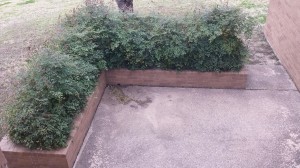 January 2014
January 2014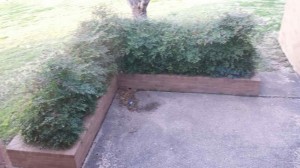 February 2014
February 2014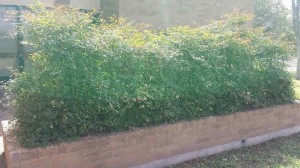 March 2014
March 2014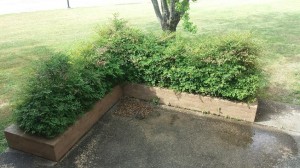 April/May 2014
April/May 2014
